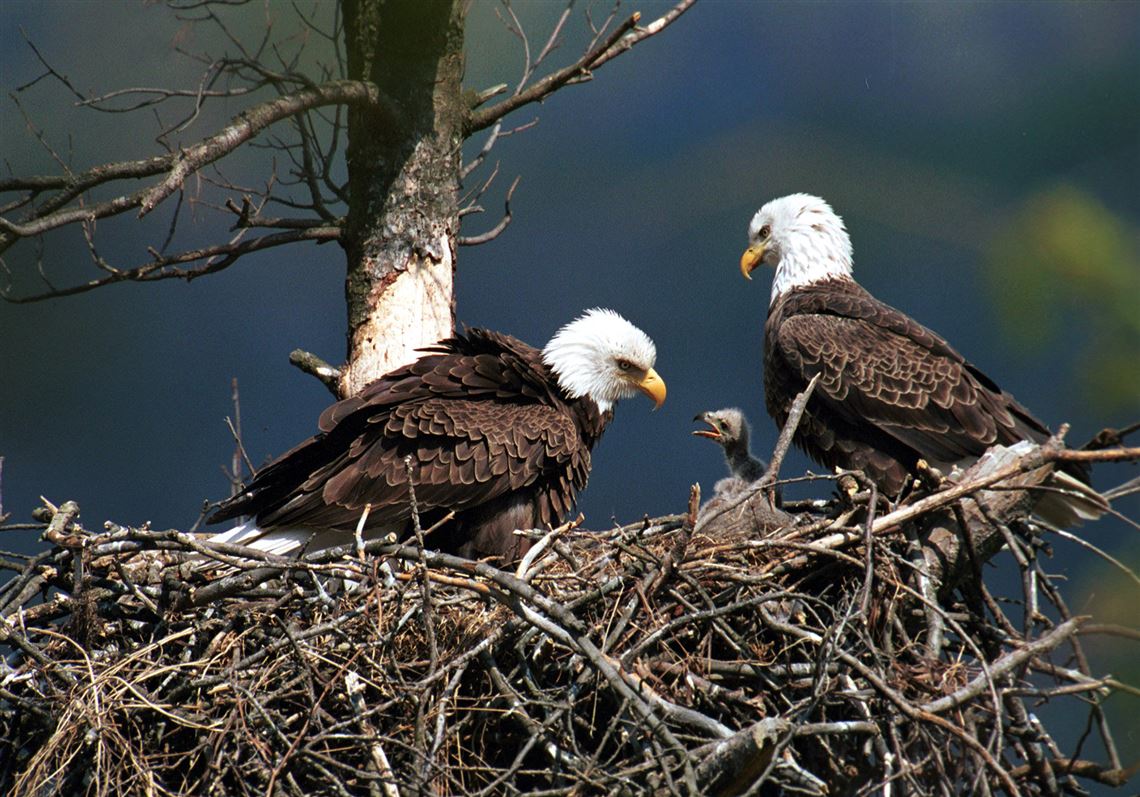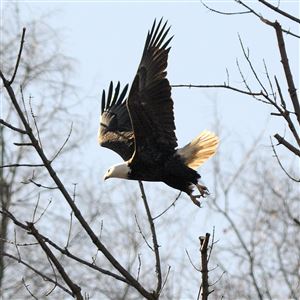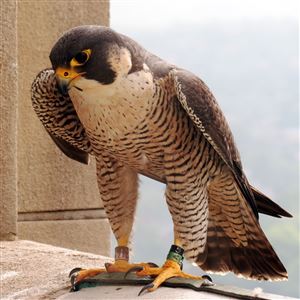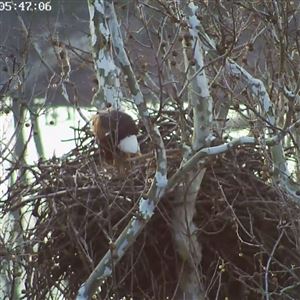The new neighbors have moved in and, boy, do they look funny. This year, while Pittsburghers continued their live-streaming love affair with bald eagles nesting under a video camera in Hays and peeked over the nest rim at the online antics of another eagle family in Harmar, five new bald eagle nesting sites have become active in southwestern Pennsylvania.
With the addition of the new nests, including another in Allegheny County, the 10-county region is now home to literally dozens of bald eagles. In 1980, just three nesting pairs were known in the entire state of Pennsylvania, according to Tom Fazi, a spokesman for the state Game Commission.
“The recovery of bald eagles represents one of the most successful wildlife conservation stories in America. It is a testament to our increasingly cleaner waterways and the protections afforded eagles over the years,” he said. “Let’s face it: Who would have ever thought even a decade ago that Allegheny County would have four active bald eagle nests within its borders, and we would be approaching 300 nest sites in the state?”
Since 2010, or maybe earlier, Greater Pittsburgh’s first confirmed bald eagle nesting pair in some 200 years have been fledging eaglets from a white ash tree on private property in Crescent.
Last year, unconfirmed eagle sightings in the Clairton area had Jim Bonner, executive director of the Audubon Society of Western Pennsylvania, driving the back roads of the industrial Monongahela valley looking for a nest. It was finally discovered on a bluff overlooking the Youghiogheny River southeast of McKeesport.
In Beaver County, eagles have moved in along the Beaver River near New Brighton, and another couple are nesting near Loyalhanna Creek just outside Ligonier, Westmoreland County. Canonsburg Lake, near Little Lake Theater, is the site of a Washington County nest, and outside Meyersdale, Somerset County, a young eagle couple have spruced up a fixer-upper nest that had been vacant for several years.
A total of 26 known bald eagle nests are active this spring throughout the region: Allegheny County, four; Armstrong, six; Beaver, three; Cambria, one; Fayette, three; Greene, one; Indiana, one; Somerset, two; Washington, two; and Westmoreland, three. That’s 52 resident adult bald eagles plus two weeks-old eaglets in each of the Hays and Harmar nests plus an unknown number of additional offspring that haven’t been seen because there are no live-streaming cameras on those sites.
Mr. Fazi said it’s important that people give the birds some privacy, especially during the sensitive chick-rearing period. A state-imposed 660-foot privacy zone buttressed by stiff fines surrounds all confirmed Pennsylvania eagle nests. A nationwide population surge prompted wildlife managers to remove the birds from federal threatened and endangered lists in 2007, and they were delisted in Pennsylvania in 2014. Bald eagles remain protected, however, under the Migratory Bird Treaty Act, the Lacey Act and the Bald and Golden Eagle Protection Act, which provides for civil penalties of up to a year in jail or a $5,000 fine for a first offense, and criminal convictions with fines as high as $250,000 for those who harm or disturb eagles.
It’s unclear where the new residents came from, but Mr. Fazi said it’s likely that some moved in to be close to family.
“We can’t say for certain whether these are descendants of previous eagles from our region, but I would think it would be logical to assume that at least some of them are,” he said. “Eagles tend to return to nest in areas near where they were reared. So, we can presume that at least some of these new nesting pairs may have been raised nearby.”
John Hayes: 412-263-1991, jhayes@post-gazette.com.
First Published: April 25, 2016, 4:00 a.m.
Updated: April 25, 2016, 4:28 a.m.




















